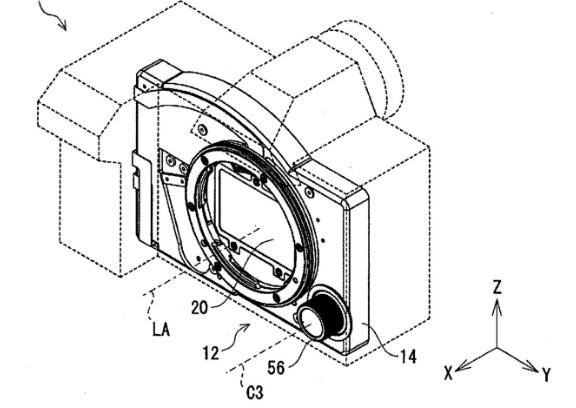Panasonic, a leading manufacturer of cameras and imaging devices, has recently filed a patent application for a new filter system that can be used in cameras with CCD or CMOS sensors. The patent, which was published on August 28, 2023, describes a system that allows the user to access the imaging surface of the sensor without any obstruction from the filters.
What is the Patent About?
The patent application, titled “Imaging Apparatus and Filter Unit Drive Method”, explains that the filter system consists of two filter units: a first filter unit that has an electronic ND filter whose light transmittance can be changed, and a second filter unit that has a fixed optical filter such as glass. The filter units are mounted on a disk that can rotate around the center line of the sensor. The disk can move the filter units between a filtering position in front of the imaging surface and a retracted position away from the imaging surface.

The patent also describes a drive mechanism that can control the movement of the filter units. The drive mechanism can execute two modes: an interlocking mode and a single motion mode. In the interlocking mode, one of the filter units is interlocked so as to be located at the retracted position, while the other one is driven to the filtering position. In the single motion mode, one of the filter units is maintained in a stopped state at the retracted position, while the other one is driven independently.
What are the Advantages of the Patent?
The patent claims that the filter system has several advantages over conventional systems. One of the advantages is that it facilitates access to the imaging surface of the sensor, which can be useful for cleaning or inspecting purposes. The patent states that in conventional systems, the imaging surface can not be accessed if there are filters in front of it, which can cause problems such as dust accumulation or damage. Therefore, by making a filter system that can rotate out of the way, this issue can be solved.
Another advantage is that it allows the user to select different combinations of filters according to their needs. The patent states that in conventional systems, the user has to change the filters manually or use external devices such as matte boxes, which can be cumbersome or expensive. Therefore, by making a filter system that can switch between different filters automatically or manually, this issue can be solved.
How Does it Compare to Other Filter Systems?
The patent does not mention any specific competitors or products, but it does cite some prior art that relates to similar filter systems. For example, it refers to WO 2021/200141 A, which discloses an imaging apparatus with a filter unit whose light transmittance can be changed. The filter unit includes a plurality of different optical filters and a disk that supports them. As the disk rotates, one optical filter is disposed in front of an imaging surface of an imaging element.
However, the patent also points out some differences and improvements over the prior art. For example, it states that in WO 2021/200141 A, only one optical filter can be arranged in front of the imaging surface at a time, while in the present invention, two optical filters can be arranged in front of the imaging surface simultaneously or separately. It also states that in WO 2021/200141 A, there is no disclosure of how to access the imaging surface when there is an optical filter in front of it, while in the present invention, there is a disclosure of how to move the optical filters away from the imaging surface.
What are the Implications of the Patent?
The patent does not specify any particular applications or markets for the filter system, but it implies that it can be used in various types of cameras and imaging devices that have CCD or CMOS sensors. These could include digital cinema cameras, mirrorless hybrids, DSLRs, camcorders, action cameras, drones, smartphones, tablets, laptops, webcams, security cameras, medical devices, and more.
The patent also does not indicate any plans or timelines for commercializing or licensing the filter system, but it suggests that it could offer some benefits and advantages for users and manufacturers alike. For users, it could provide more flexibility and convenience in choosing and changing filters according to their needs and preferences. For manufacturers, it could reduce costs and complexity by integrating multiple filters into one system.
